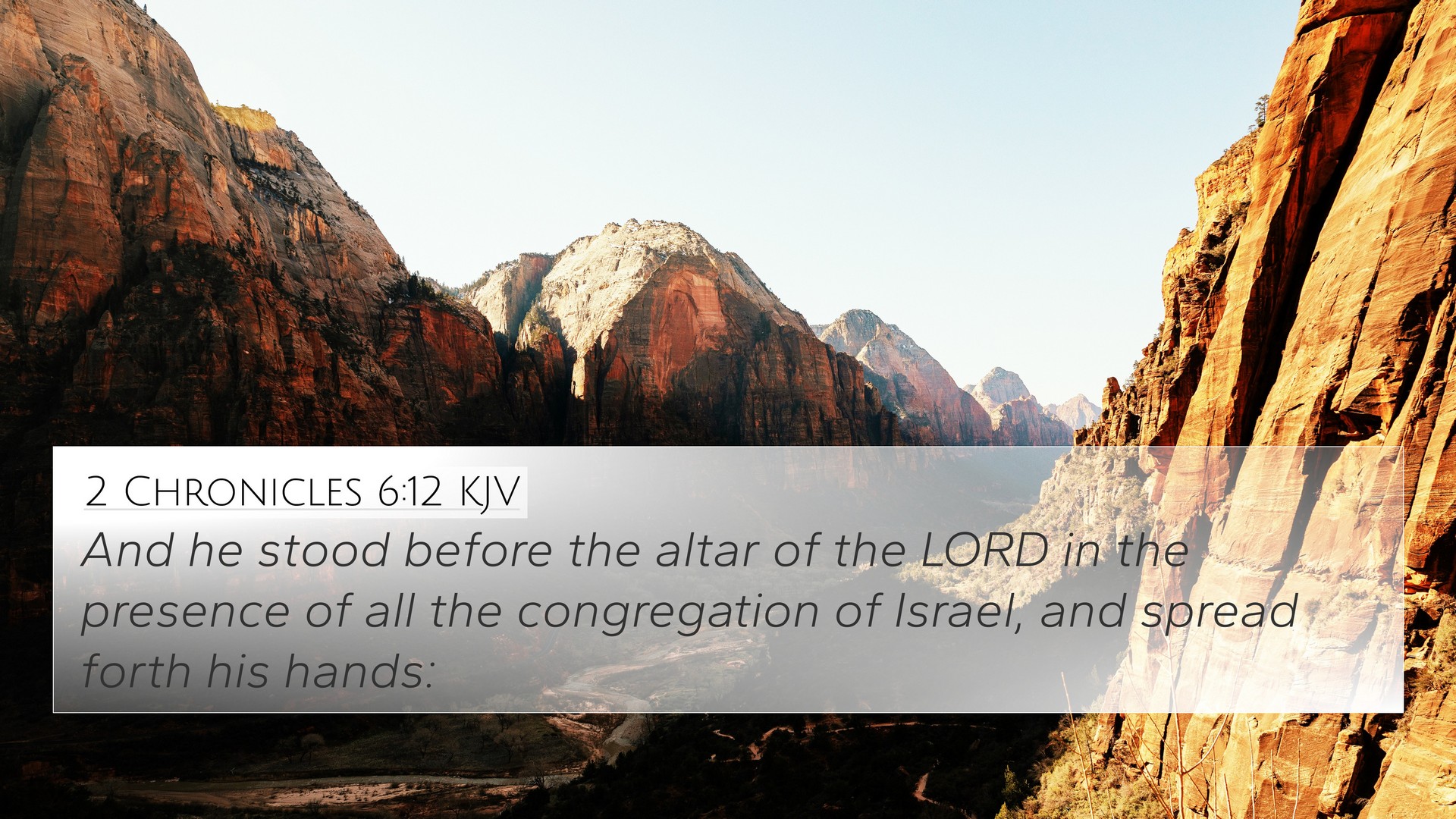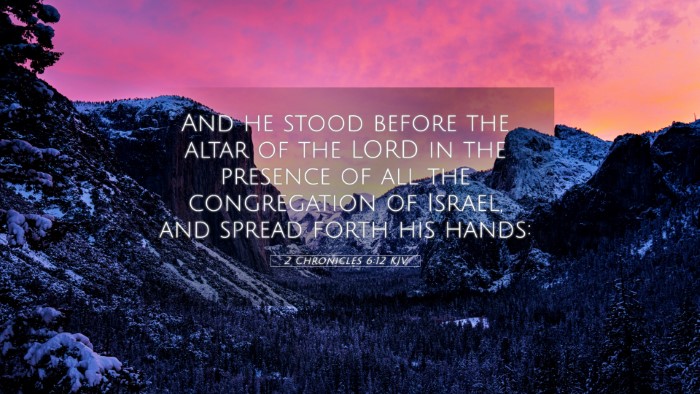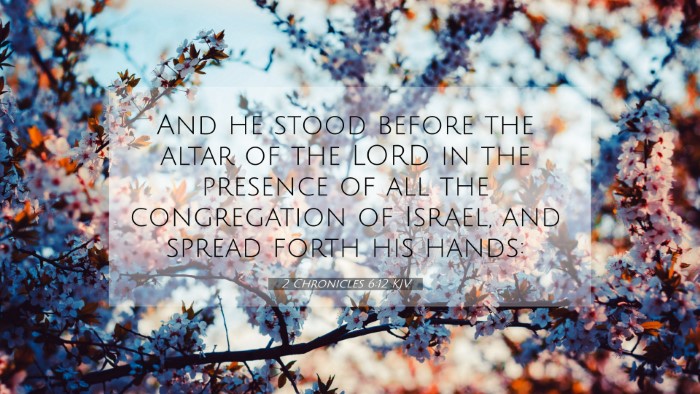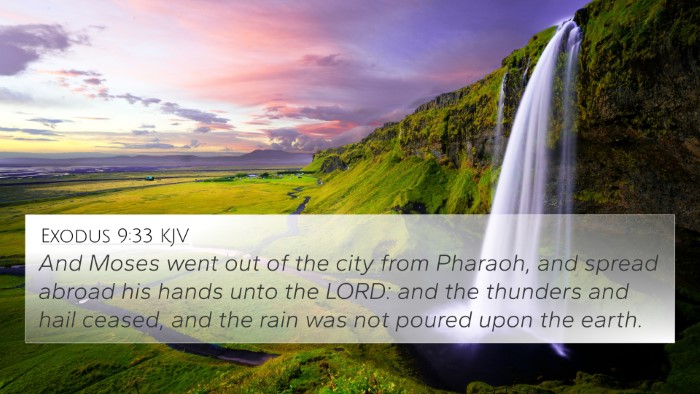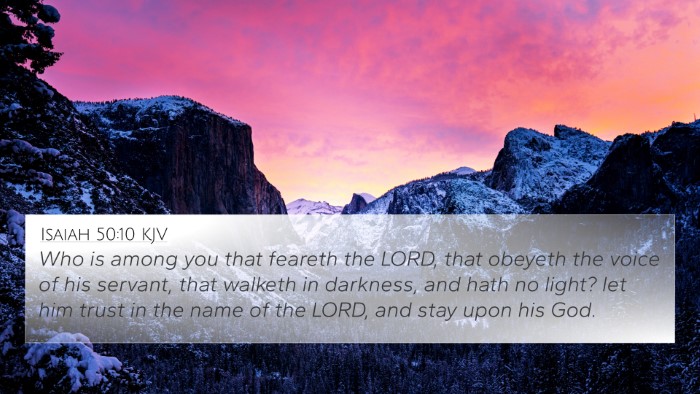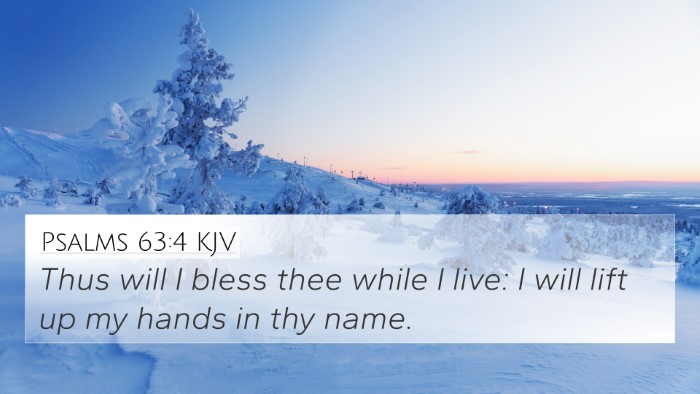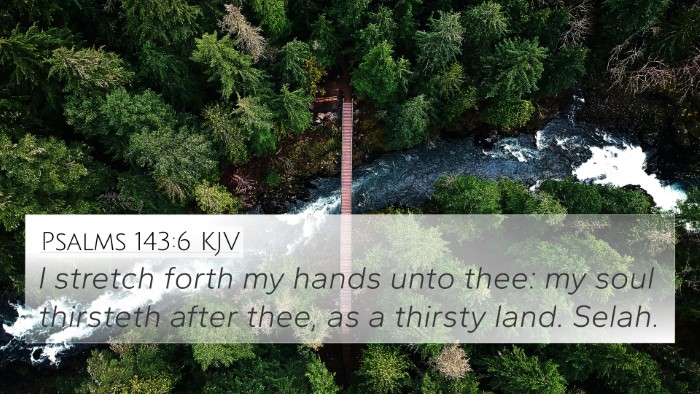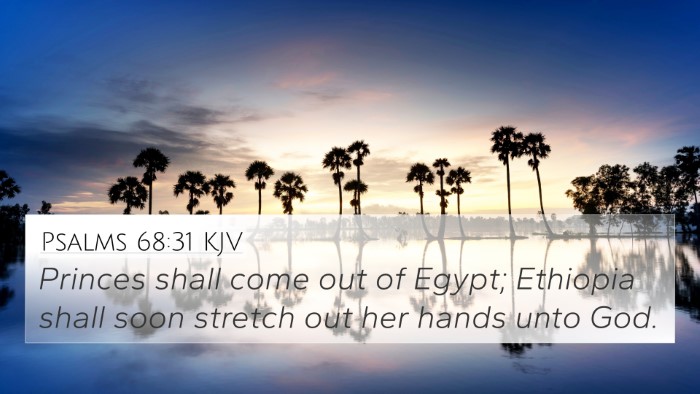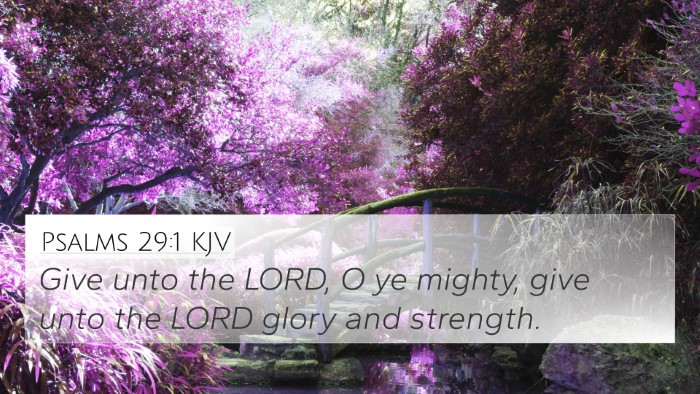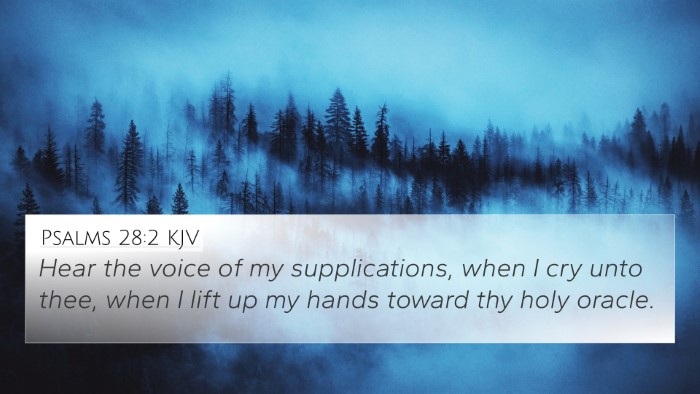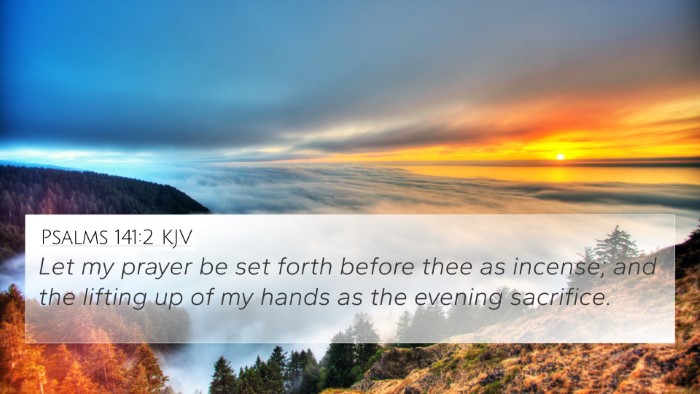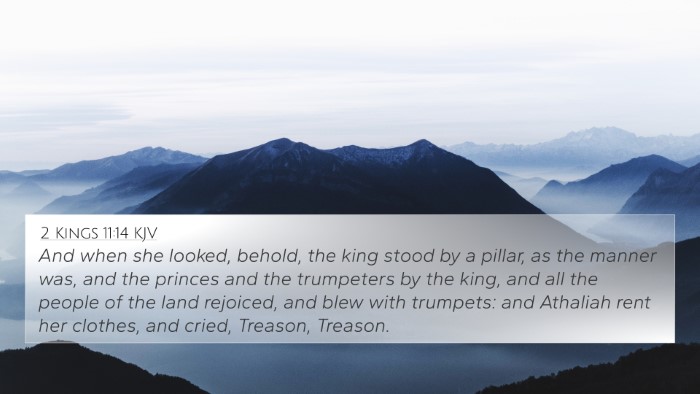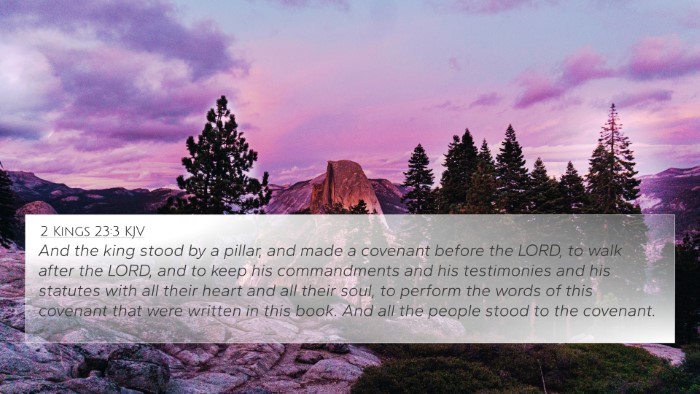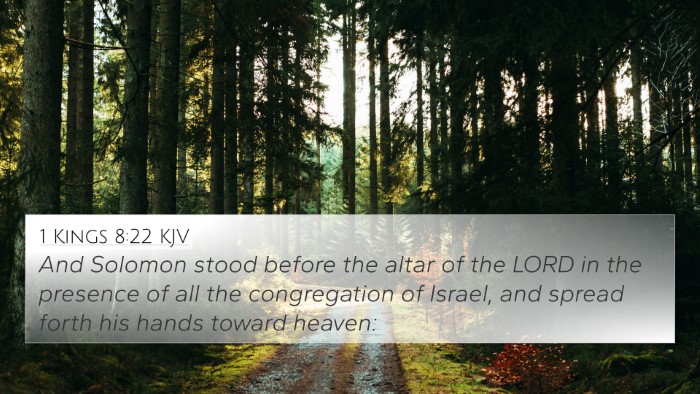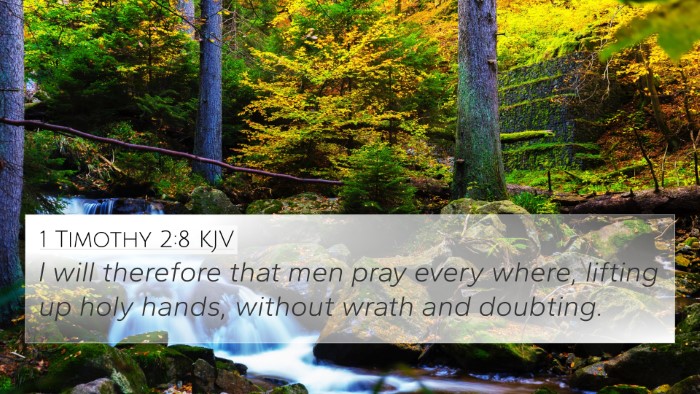Understanding 2 Chronicles 6:12
Verse Text: "And he stood before the altar of the LORD in the presence of all the congregation of Israel, and spread forth his hands." (2 Chronicles 6:12)
Interpretation and Insights
The verse presents a significant moment during King Solomon's dedication of the temple. This act of standing before the altar and spreading out his hands symbolizes a posture of prayer, dedication, and submission to God. Let’s delve into various insights drawn from public domain commentaries.
Matthew Henry's Commentary
Matthew Henry explains that Solomon's act of standing signifies his leadership role in guiding Israel in worship. His open hands symbolize an appeal to God for mercy and guidance, indicating how prayer should be conducted—with reverence and visible signs of earnestness. Henry emphasizes the communal aspect of worship, as Solomon stood in the presence of all Israel, highlighting the need for collective devotion.
Albert Barnes' Notes
Albert Barnes elaborates on the historical context, noting that this moment marked a pivotal establishment of the temple as a central place of worship. He asserts that the act of spreading hands is a common biblical symbol of prayer and supplication, representing a reaching out to God. Barnes suggests that this verse encapsulates the essence of seeking God’s presence and favor, which is foundational to Israel’s identity as God's chosen people.
Adam Clarke’s Commentary
Adam Clarke offers a view on ritualistic elements in worship. He points out that Solomon’s actions were not merely traditional but demonstrated a heartfelt desire for divine guidance. Clarke emphasizes the importance of gestures in prayer, which express the worshipper's state of heart. He connects Solomon's prayerful position with the broader narrative of Israel's covenant relationship with God.
Key Themes and Messages
This verse highlights several important themes in biblical worship:
- Prayer as Communication: Standing and open hands symbolize a sincere approach to God, emphasizing transparency in communication.
- National Identity: Solomon’s act in front of the congregation reinforces unity in worship among the people of Israel.
- Divine Guidance: The moment captures the sentiment of seeking God’s guidance through prayer, an essential aspect of the Israelite faith.
- Dedication and Commitment: The physical act represents the dedication of the temple and the commitment of the people to serve the Lord.
- Liturgical Significance: This moment serves as a liturgical model for worship, showcasing humility and devotion to God.
Cross-References to 2 Chronicles 6:12
The following Bible verses create a rich tapestry of connection with 2 Chronicles 6:12:
- 1 Kings 8:22: Solomon’s prayer before the altar, expanding on his public display of devotion.
- Psalms 28:2: The expression of lifting hands in prayer, resonating with Solomon’s act.
- Luke 24:50: Jesus lifted His hands in blessing, continuing the theme of prayerful posture.
- 1 Timothy 2:8: A call to lift holy hands in prayer, echoing Solomon’s actions.
- 2 Chronicles 7:14: A reminder of the importance of humility and seeking God’s face.
- Philippians 4:6: Encouragement to make requests known to God through prayer, aligning with the thematic essence of seeking divine assistance.
- Hebrews 4:16: Assurance of approaching the throne of grace with boldness, reflecting a similar principle of open communication with God.
- Nehemiah 9:32-33: A historical reflection on prayer and reliance on God's provisions, linking back to the communal prayer context.
- James 5:16: The power of prayer in a community, reinforcing the collective element of Solomon’s gathering.
- Matthew 6:6: The principle of praying in private connects to the sincere nature of public worship demonstrated here.
Conclusion and Application
2 Chronicles 6:12 serves as a robust example of how public worship should be conducted, highlighting the significance of prayerful postures and community in seeking God's favor. By examining Solomon’s prayer and connecting it with other scriptures, we can glean essential insights into the nature of worship and prayer in the life of a believer. The act of spreading hands symbolizes more than just a physical gesture; it represents a heartfelt desire to connect with God and discern His will.
Tools for Further Study
To deepen your understanding and explore connections between Bible verses, consider utilizing the following resources:
- Bible Concordance: Useful for finding related verses and understanding themes.
- Bible Cross-Reference Guide: Helps identify and study cross-referencing Bible texts.
- Cross-Reference Bible Study: A method for comparing related scriptures for deeper insights.
- How to Use Bible Cross-References: Guidelines for effectively engaging with interconnected verses.
- Bible Reference Resources: Tools for scholars and laypeople alike in examining scripture.
- Comprehensive Bible Cross-Reference Materials: Invaluable for thorough scriptural study and sermon preparation.
